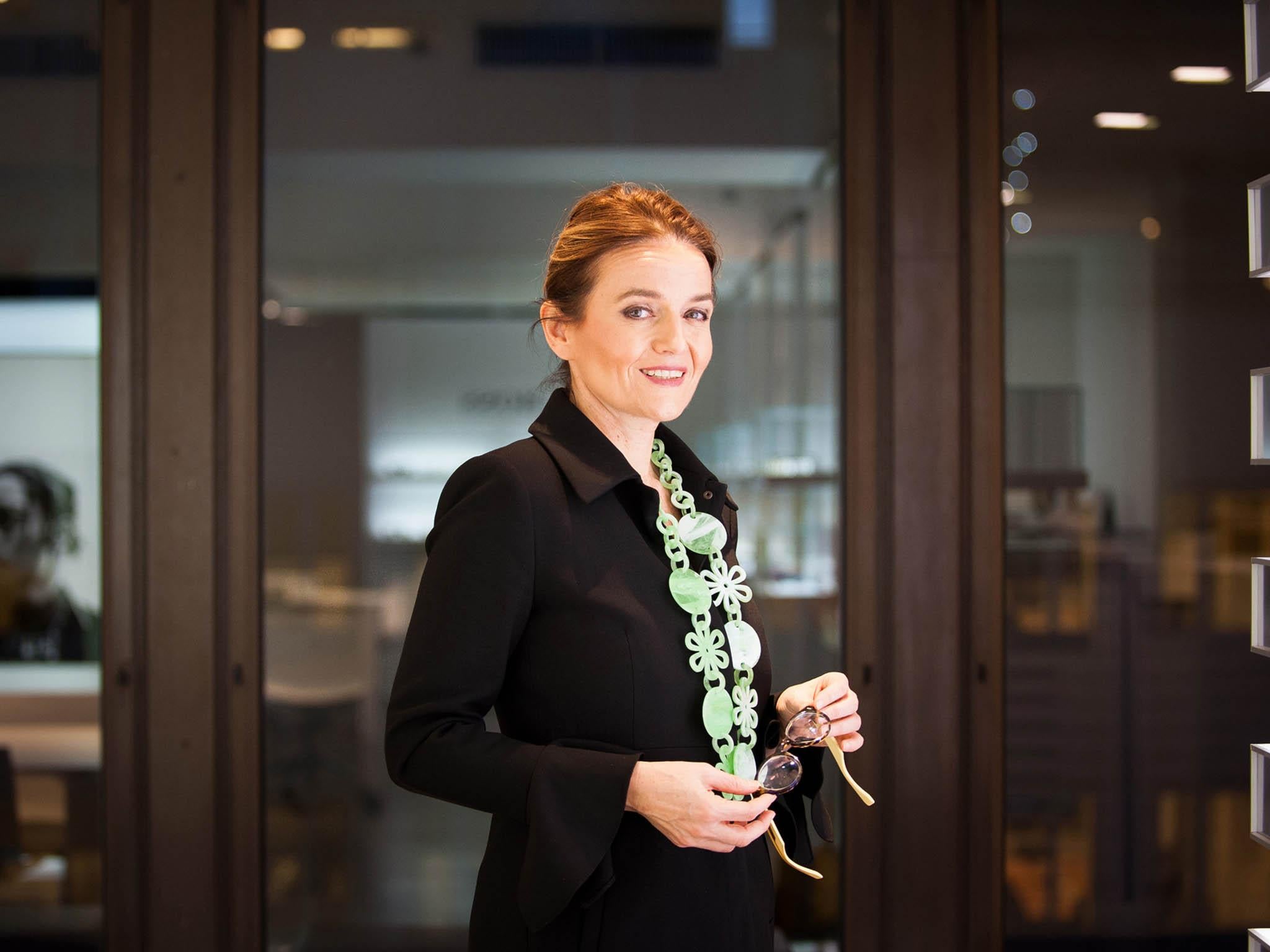Maker of spectacles for Dior expands into smart glasses

Safilo Group, the eyewear company that makes frames for Dior, Fendi and Hugo Boss, is looking to succeed in a high-tech category where even Google has struggled: smart glasses.
The Italian company is debuting a set of internet-connected spectacles next month at the Consumer Electronics Show in Las Vegas. Unlike Google Glass, a product that was discontinued last year, the Safilo frames won't have a camera or display – they'll just look like regular glasses.
The Safilo product will also have more limited functions, for now. It will mainly measure brainwaves and send the data to an app installed on a smartphone or tablet. The idea is to let people assess their moods, helping them relax and meditate. Additional features will be added over time, Chief Executive Officer Luisa Delgado said in an interview.
But the main selling point may be that Safilo specs won't make the wearer look like a cyborg. The glasses, under Safilo’s sports eyewear brand Smith, are fashionable enough for everyday use, so they’ll appeal to a broad set of consumers rather than “a few geeks,” she said.
“The consumers don’t have to make sacrifices on the glasses in order to get the technology,” said Delgado, 50.
Safilo is looking to innovation to help revive flagging sales and a stock price that has declined more than 20 per cent this year. But the smart glasses industry has a mixed track record. The Google Glass prototype was phased out in January 2015 after drawing ridicule for its clunky camera – as well as privacy concerns about surreptitious video. The product also was criticised for having a short battery life. Though Google vowed to continue working on the project, Google Glass is widely seen as a failure.
Another take on the idea has fared better, especially this holiday season. Snap Inc.‘s Spectacles, which are mainly designed to shoot 10-second videos that can be uploaded to the Snapchat app, have largely sold out since they debuted in November.
If high-tech glasses catch on, they could follow the same path as smartwatches. In that category, the Apple Watch prompted LVMH's Tag Heuer and Michael Kors Holdings Ltd. to add smart timepieces to their product lines.
Luxottica Group, a Safilo rival that makes Ray-Ban and Chanel frames, sells a product called Radar Pace under its Oakley brand – voice-activated glasses that coach cyclists and runners. Essilor International, another eyewear giant, is working on smart glasses as well.
Developing high-tech specs is the right move for traditional companies such as Safilo, even if they have limited functionality initially, said Dr Harry Zervos, an analyst at research firm IDTechEx.
Gadget and tech news: In pictures
Show all 25“It’s their livelihood; it’s their next generation of products that's going to take them into a next era of innovation,” Zervos said. “They realise they can make better products as time goes by and when technology improves.”
IDTechEx estimated sales of smart glasses excluding virtual reality headsets will hit $1.8 billion (£1.5 billion) by 2021, up from $6.3 million in 2016. For Safilo, the pricing of its glasses may determine whether the product succeeds, Zervos said.
Unlike with smartwatches, it’s been difficult to make high-tech glasses palatable to mainstream consumers, according to Ramon Llamas, an analyst at International Data Corp. Virtual-reality goggles are popular for gamers, but many spectacles on the market today aren’t suitable to wear outside the house, he said.
Glasses with a camera or computer attached have “a certain creepiness factor,” Llamas said.
“It draws attention in negative way,” he said. “We’re still trying to figure out what seems to work out.”
Delgado chose Toronto-based startup InteraXon to help develop the new glasses. The eyewear, in development for a year, works the same as the Canadian company's existing $250 flagship product, the Muse Headband.
It relies on electroencephalogy technology, which doctors and scientists use to detect brain signals. Five sensors – placed on the nose bridge and behind the ears – are embedded in the frame. The spectacles’ battery will last for a week with one charge.
“It's a very expandable technology,” said InteraXon CEO Derek Luke. “It’s such a natural evolution. No one knows the technology is there except the person who's wearing the glasses.”
The spectacles, which weigh about 37 grams (about 1 ounce), will be sold online next summer in the U.S., Safilo’s largest market. Styles, colour and pricing will be disclosed at the CES conference, but the product will debut in sunglass form before being available in prescription eyewear. The technology should eventually be used with other Safilo brands.
Safilo, which ranks third in the eyewear industry behind Luxottica and Essilor, is looking to technology to help perk up sales. Delgado, a veteran of Procter & Gamble Co., has been working to turn around the company since joining in 2013.
“This is just the start,” she said. “Technology has to play a totally different role.”
© Washington Post
Subscribe to Independent Premium to bookmark this article
Want to bookmark your favourite articles and stories to read or reference later? Start your Independent Premium subscription today.

Join our commenting forum
Join thought-provoking conversations, follow other Independent readers and see their replies